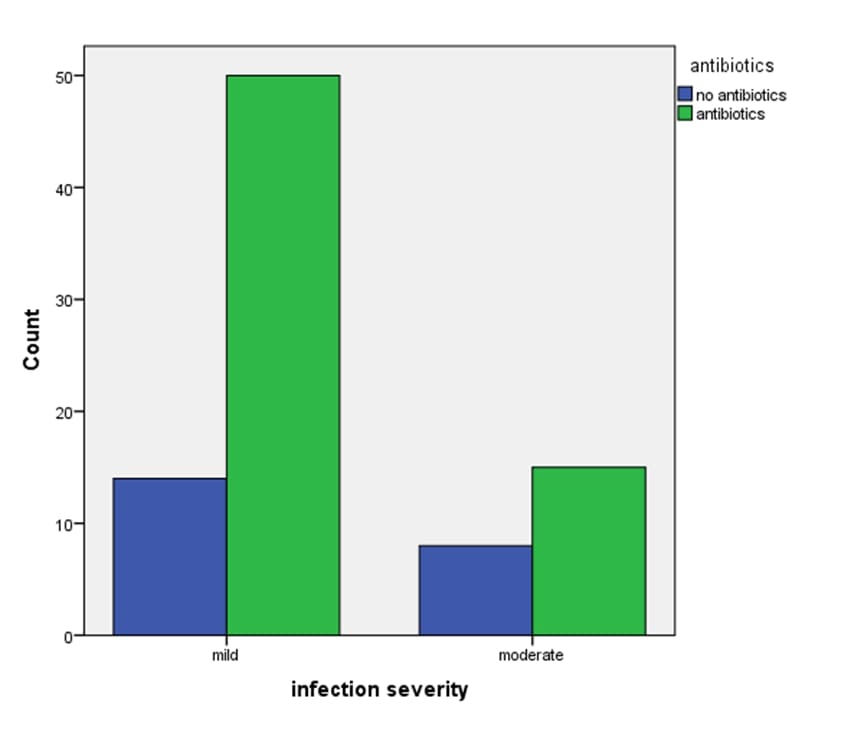References:
[1]. Murray, C. J., Ikuta, K. S., Sharara, F., et al. 2022, Global Burden Of Bacterial Antimicrobial Resistance in 2019: A Systematic Analysis. The Lancet 399:629–655.
[2]. Albarqouni, L., Palagama S., Chai J., et al., 2023, Overuse Of Medications In Low-And Middle-Income Countries: A Scoping Review. Bull World Health Organ 101:36-61D.
[3]. Godman, B., Egwuenu, A., Haque, M., et al ., 2021, Strategies To Improve Antimicrobial Utilization With A Special Focus On Developing Countries. Life. https://doi.org/10.3390/life11060528
[4]. Fernández-Montero, J. V., Corral, O., Barreiro P., Soriano V., 2022, Use of Antibiotics in Respiratory Viral Infections. Intern Emerg Med 17:1569–1570.
[5]. Molla, M. M. A., Yeasmin, M., Islam, M. K., et al., 2021, Antibiotic Prescribing Patterns at COVID-19 Dedicated Wards in Bangladesh: Findings from a Single Center Study. Infection Prevention in Practice 3:100134
[6]. Pareek, M. S, Pareek, S, Kaur, H., 2022, Impact of COVID-19 on Maternal and Child Health Services. https://doi.org/10.4103/MJBL.MJBL_61_22
[7]. Na-Bangchang, K., Porasuphatana, S., Karbwang, J., 2022, Perspective: Repurposed Drugs for COVID-19. Archives of Medical Science 18:1378–1391.
[8]. Mohammed, Y. A, Mohammed, M. A, Rajab, K. I., 2023, Prevalence of Coronavirus Disease-2019 Among Anaesthesiologists and Anaesthesia Technicians in Al Anbar Governorate, Iraq. Al-Anbar Medical Journal 19:36–41
[9]. Mondal, U. K, Haque, T, Biswas, MAAJ, et al., 2022, Antibiotic Prescribing Practices for Treating COVID-19 Patients in Bangladesh. Antibiotics 11:1–14.
[10]. Manohar, P., Loh, B., Athira, S., Nachimuthu, R., Hua, X., Welburn, S. C., Leptihn, S., 2020, Secondary Bacterial Infections During Pulmonary Viral Disease: Phage Therapeutics as Alternatives to Antibiotics? Front Microbiol 11:1–11.
[11]. Li, C-X., Noreen, S., Zhang, L-X., et al., 2022, A Critical Analysis of SARS-CoV-2 (COVID-19) Complexities, Emerging Variants, And Therapeutic Interventions And Vaccination Strategies. Biomed Pharmacother 146:112550.
[12]. O’Kelly, B., Cronin C., Connellan D., et al., 2021, Antibiotic Prescribing Patterns In Patients Hospitalized with COVID-19: Lessons from the first wave. JAC Antimicrob Resist 3:1–8.
[13]. Fiol FDS Del., De Andrade-Jr IP., Da Silva M. T., Barberato-Filho S., Lopes L. C., Bergamaschi CDC., 2022, Changes in the Profile of Antibiotic Prescriptions by Dentists in Brazil during the Pandemic. Int J Dent. https://doi.org/10.1155/2022/6570812
[14]. Ashour, R. H, Abdelkader, E. A, Hamdy, O., Elmetwally, M., Laimon, W., Abd-Elaziz, M. A., 2022, The Pattern of Antimicrobial Prescription at a Tertiary Health Center in Egypt: A Point Survey and Implications. Infect Drug Resist 15:6365–6378.
[15]. Kurdi, A, Hasan, A. J, Baker, K. I, Seaton, R. A, Ramzi, Z. S, Sneddon, J., Godman, B., 2021, A Multicentre Point Prevalence Survey Of Hospital Antibiotic Prescribing And Quality Indices In The Kurdistan Regional Government of Northern Iraq: The need for Urgent Action. Expert Rev Anti Infect Ther 19:805–814.
[16]. Talaat, M., Tolba., S, Abdou, E., Sarhan, M., Gomaa, M., Hutin, YJ-F., 2022, Over-Prescription and Overuse of Antimicrobials in the Eastern Mediterranean Region: The Urgent Need for Antimicrobial Stewardship Programs with Access, Watch, and Reserve Adoption. Antibiotics (Basel). https://doi.org/10.3390/antibiotics11121773
[17]. Hajian-Tilaki, K., 2011, Sample Size Estimation In Epidemiologic Studies. Caspian J Intern Med 2:289–298
[18]. Xia F, Hughes, J. P, Voldal, E. C, Heagerty, P. J ., 2021, Power and Sample Size Calculation for Stepped-Wedge Designs With Discrete Outcomes. Trials. https://doi.org/10.1186/s13063-021-05542-9
[19]. Abelenda-Alonso., G, Padullés, A., Rombauts, A., Gudiol C., Pujol, M., Alvarez-Pouso, C., Jodar, R., Carratalà, J., 2020, Antibiotic Prescription During the COVID-19 Pandemic: A Biphasic Pattern. Infect Control Hosp Epidemiol 41:1371–1372.
[20]. Hallinen, K. M, Karslake, J., Wood, K. B., 2020, Delayed Antibiotic Exposure Induces Population Collapse In Enterococcal Communities With Drug-Resistant Subpopulations. Elife, 9:1–21.
[21]. Neill, J. O’., 2014, Antimicrobial Resistance: Tackling A Crisis For The Health And Wealth Of Nations The Review on Antimicrobial Resistance Chaired.
[22]. Sarmiento, M. A, Maglutac, M. T, Yanga-Mabunga, M. S., 2019, Antibiotic Prescribing Practices of Filipino Dentists. Int J Publ Health Sci 8:332–340.
[23]. World Health Organization, 2019, Clinical Management Of Severe Acute Respiratory Infection when Middle East Respiratory Syndrome Coronavirus (MERS-CoV) Infection Is Suspected. Interim guidance Updated January 2019 WHO/MERS/Clinical/15.1 Revision 1. 1–12.
[24]. Goncalves Mendes Neto A, Lo K. B, Wattoo, A, et al., 2021, Bacterial Infections And Patterns of Antibiotic Use in Patients with COVID-19. J Med Virol 93:1489–1495.
[25]. Hamada, S., Tokuda, Y., Honda, H., Watari, T., Suzuki, T., Moromizato, T., Narita, M., Taniguchi, K., Shibuya, K., 2022, Prevalence and Characteristics of Antibiotic Prescription for Acute COVID-19 Patients in Japan. Sci Rep 12:1–6.
[26]. Chotklang, D, Padphai, I, Porusia, M, Chotchai, T, Ekathat, T., 2023, Stress And Quality Of Life Among Susceptible Thai People During COVID-19 Pandemic. Int J Publ Health Sci, 12:1687–1693.
[27]. Colson P, Raoult D., 2016, Fighting Viruses With Antibiotics: An Overlooked Path. Int J Antimicrob Agents 48:349–352.
[28]. Ali, M., Lucien, B., Canarie, M. F, et al ., 2020, Antibiotics and Antimicrobial Resistance in the COVID-19 era: Perspective From Resource-Limited Settings. International Journal of Infectious Diseases 104:250–254.
[29]. Clancy, C. J., Hong Nguyen, M., 2020, Coronavirus Disease 2019, Superinfections, and Antimicrobial Development: What can we expect? Clinical Infectious Diseases 71:2736–2743.
[30]. Oliver, M. E, Hinks, T.S.C., 2021, Azithromycin in Viral Infections. Rev Med Virol, 31:1–13.
[31]. Orak, F., Nazik, S., Yalcinkaya, K. T, Aral, M, Ates, S., Doganer, A., 2023, The Relationship of Comorbid Diseases and Empirical Antibiotic Usage with Superinfection in COVID-19 Patients. Journal of the College of Physicians and Surgeons Pakistan, 33:852–856.
[32]. Al-Kaif LAIK., Al-Saadi MAK., Al-Charrakh, A. H ., 2022, Effect of SARS-CoV-2 infection on HBV-Infected Patients: Reactivation. Medical Journal of Babylon 19:736–746.
[33]. Zaher, K., Basingab, F., Alrahimi, J., Basahel, K., Aldahlawi, A., 2023, Gender Differences in Response to COVID-19 Infection and Vaccination. Biomedicines. https://doi.org/10.3390/biomedicines11061677
Di Gennaro, F., Pizzol, D., Marotta, C, Antunes, M., Racalbuto, V., Veronese, N., Smith, L., 2020, Coronavirus diseases (COVID-19) Current Status And Future Perspectives: A Narrative Review. Int J Environ Res Public Health.


